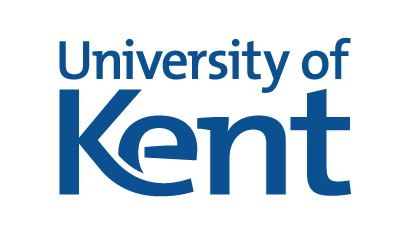10 types of creative writing
If you’re a creative individual with a passion for writing, you’ve come to the right place. Explore the different types of creative writing in this article.

Do you have aspirations to be the next voice of your generation? If so, you may want to find out more about creative writing and start digging for inspiration.
In this article, we’ll explore the different types of creative writing, from poetry to screenplays, and take a deep dive into this world of imagination and creativity. By the end of this guide, you should have a clearer idea of what creative writing is and which area you want to specialise in.
What is creative writing?
Creative writing is a form of artistic expression. It inspires writers to use their imagination to bring bags of personality and flair to their work.
It doesn’t just focus on more traditional, technical forms of writing, like journalistic and academic styles, but instead displays imagination and invention. It offers writers a platform to express themselves and focus on areas like character development, narrative, and storylines.
When it comes to creative writing, you can throw off the shackles of conventional writing and let your imagination run wild. There are a vast range of different genres and styles you can specialise in, which we’ll discuss in great detail below.




Types of creative writing
There are many different forms of creative writing for you to consider. Here, we will take a look at the 10 most popular types of creative writing, so you can decide which discipline to pour your heart and soul into.
1. Poetry
The artistic discipline of poetry is one of the more popular forms of creative writing you can specialise in. There are many different types of poetry, including free verse, haikus, sonnets, limericks, and more.
If you’re just beginning to experiment with creative writing, then poetry is a great place to start. You can determine the length of your poems, writing style, and complexity, tailoring your work to suit your preferred style.
It also encourages you to play around with a variety of literary techniques, including alliteration, simile, imagery, and irony. Poetry is the perfect gateway to understanding how and when to use literary devices effectively.
Whether you favour long-running prose or short, concise rhyming poems, it acts as a great opportunity to get in touch with your creative side and start producing some highly imaginative written work.
2. Song lyrics
If poetry floats your boat, then it’s likely that you’ll also enjoy writing song lyrics. When you’re learning how to write creatively, lyrics can be an excellent introduction to this world, especially if you’re musically minded.
While matching your lyrics to music can be a lot of fun, it can also be very challenging. You’ll not only need to think about the written side of producing lyrics, but also the genre of music you’re writing for.
It can also be a great group exercise with friends. Especially if you’re not particularly musical and want to hear how your lyrics come across when performed.
Get your song in the charts by learning how to write your first song with this course by The University of Sheffield.
3. Journals and diaries
A written account of someone’s experiences and feelings, journal and diary entries are great ways of expressing yourself and documenting your life. This qualifies as a type of creative writing if you’re doing more than just keeping a log of events, and instead focusing more heavily on emotions and storytelling.
Whether you choose to keep your work private or publish it is entirely up to you. Either way, journalling can be a great way of harnessing your writing skills and experimenting with different techniques – such as imagery, foreshadowing, and flashbacks.
Keeping a journal or diary can also be great for your mental health, helping you to express how you feel without having to do so verbally.
4. Plays and screenplays
If you’ve always wanted to pursue a career in the world of drama, then testing your creative writing skills with plays and screenplays could be right up your street. Plays have been written for centuries and still remain a hugely popular art form.
If you want your written work to be brought to life and performed on a stage near you, creating a play is an excellent way of getting your story heard and characters seen.
Writing scripts encourages you to think outside the box, bringing together character dialogue, stage directions, and setting ideas.
In terms of screenwriting, you could become the next Quentin Tarantino or Spike Lee with a little help from courses like the University of East Anglia’s An Introduction to Screenwriting.
A pivotal part of any popular screenplay is the writing behind it, whether you’re creating the next high-action drama or romantic comedy. Screenwriting will encourage you to develop your own scripts in a creative way, ensuring your written work is seen by audiences around the world.
Literary techniques you develop with writing plays and screenplays can include satire, motif, dramatic irony, allusion, and diction.
5. Personal essays
Focusing on the author’s life and experiences, a personal essay is a form of creative non-fiction that almost acts as an autobiography.
A personal essay focuses on a message or theme, using the writer’s personal experience to communicate their story. However, it’s important that the key elements of the story are true, otherwise it becomes a piece of short fiction.
If you’ve got a personal story that you want to share, then personal essays act as the perfect gateway into creative writing and can help your story be heard.




6. Short fiction
If you haven’t got the time to write a novel, but have a lot of amazing, imaginative ideas you want to collate into fiction writing, then short stories are for you. By using bite-sized narratives, you can create an engaging piece of work that doesn’t take the reader ages to digest.
In an ever-changing world where people are short on time and always in a rush, short stories offer a great alternative to a novel and are becoming massively popular.
It’s also a good place to start if you do have ambitions to write a novel, as it can help you to hone your writing, develop your storytelling abilities, and perfect literary techniques like imagery and foreshadowing.
7. Letters
Letters differ from journal and diary entries, as they specifically focus on a target reader. Again, this is a great example of creative writing where you can produce a personal account of a particular event or dig deeper into the relationship between two people.
With letters, you’re able to use hyperbole, flashbacks, and motif to creatively reveal the dynamic of the sender and recipient, which can make for an excellent story in itself.
Many famous writers have had their letters published, as it allows them to demonstrate a different side to their personality and experiment with a completely different written format.
8. Novels
As soon as someone mentions creative writing, the first thing that often springs to mind is writing novels. One of the most popular forms of creative writing, novels are works of fiction that encourage you to imaginatively use storytelling to communicate with your reader.
Typically divided into chapters, novels are a longer form of creative writing that take time and commitment to get right. You’ll need to be patient and incredibly driven to write a novel in full.
Writing a book can be incredibly rewarding, which is why so many creative writers decide to take on this initially daunting task. It also allows you to work with a whole host of literary devices, from metaphors and personification to imagery and symbolism.
Fancy yourself the next Margaret Atwood, Steven King or Toni Morrison? Learn how to write a novel here.
9. Free writing
If you really want to let your imagination run wild and get the creative juices going into overdrive, then free writing ticks all of the right boxes.
This type of creative writing allows you to write without applying any thought to logic, sentence structure, or grammar. Anything goes with free writing, encouraging you to quite simply spill words and images onto a page how you see fit.
Free writing can be a great exercise when you first start to write, as it gives you the complete freedom to experiment and trial several different writing techniques without putting any pressure on the outcome.
10. Speeches
Anybody reading this will have an iconic speech spring to mind. Good speeches are remembered forever, but getting them right can be very challenging. Whether they’re persuasive, inspirational, or educational, speeches allow you to connect with an audience and express yourself.
Excellent speech writers are always in demand, whether for a work event, wedding, award ceremony, or another public occasion. That’s why speech writing can be an invaluable skill and worthwhile mastering.
Ultimately, the aim of a speech is to inspire and motivate an audience, so once you’ve nailed speech writing, you’ll be able to turn your hand to most other forms of creative writing.




Creative writing exercises
Now you know what creative writing is and the different types you can experiment with, it’s time to put some of this knowledge to the test.
Creative writing exercises are a great way of strengthening your writing skills and getting you in the mood for creating world-class content.
Why not get started with some of these exercise ideas?
Brainstorm some creative writing ideas
Get a blank piece of paper and start writing down all of your thoughts and ideas. Don’t overthink it – you can use this as a stream-of-consciousness exercise to inspire you to start writing. Not only will this inspire you to think creatively, but you should also have plenty of good ideas to show for it.
Create writing prompts
A writing prompt is a great way of kickstarting the writing process that acts as a springboard into a spontaneous story. You can use a sentence, short paragraph, or image to ignite your creativity. This creative writing exercise is all about stimulating new ideas.
Borrow someone else’s story
If you’ve recently heard a great story from a family member or friend, then why not get it down in writing and start to experiment with it? You could even write the story as if it has happened to you. Another approach would be to use a well-known book, like The Hobbit, for example,, and write yourself into a scene.
Start a blog
Writing blogs is a great exercise if you want to develop your writing skills and get your work out into the public domain for free. This is a good way of receiving feedback on your written work and polishing your skills before you attempt one of the types of creative writing we’ve listed in this article.
Describe your surroundings
Take a look around you and try to describe what you see, as creatively as possible. You can always over-exaggerate and embellish the truth to make your story more exciting, but try to notice things you can immediately see to inspire you – even if you’re just sitting in your home office.
For more information on how to improve your writing skills, check out this helpful blog.
Online creative writing courses on FutureLearn
We certainly feel inspired and ready to take on the world of creative writing, so hopefully you feel the same way. The good news is that if you’re ready to enhance your creative writing skills and throw yourself into a new learning experience, then we have some amazing courses that can help at FutureLearn.
Whether you want to have a crack at some poetry or have a go at writing your first power ballad, we have a course tailor-made to your wishes. So what are you waiting for? Pick up that pen and start your creative writing journey today.
- Start Writing Fiction by The Open University
- What Is Poetry? An Introduction to Literary Analysis by the University of Newcastle, Australia
- Stylistics: Using Linguistics to Explore Texts and Meaning by the University of Huddersfield
- How to Write Your First Song by The University of Sheffield
- Copywriting Fundamentals by The Chartered Institute of Marketing
- Fairy Tales: Meanings, Messages, and Morals by The University of Newcastle Australia
- An Introduction to Screenwriting by UEA (University of East Anglia)
- Playing with Poetry: Creative Writing and Poetics by The University of Newcastle Australia.








